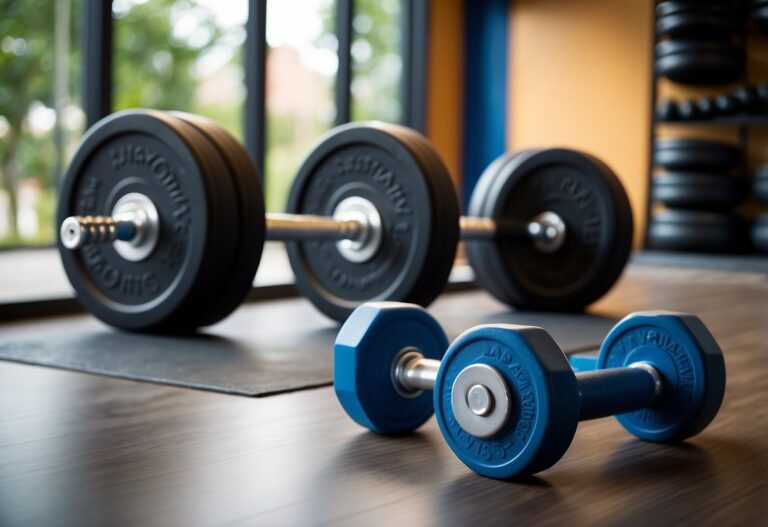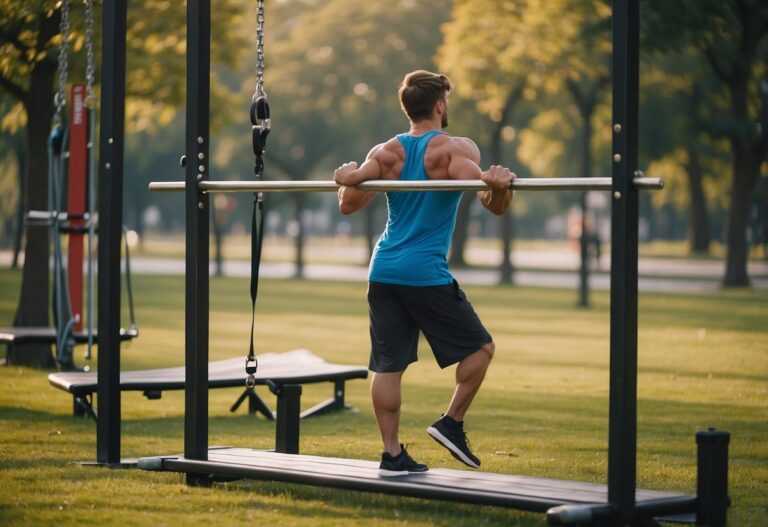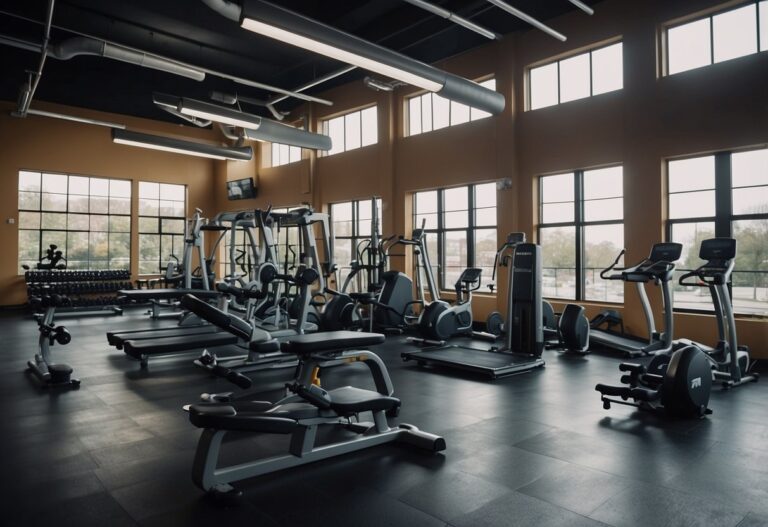Sometimes, your usual workout routine can become boring and make it hard to stay motivated. Trying out new and unique exercises can keep things exciting and help you discover new ways to challenge your body. Whether you’re looking for something fun or just want to avoid a plateau, exploring different workouts can bring a fresh perspective to your fitness journey.

Have you ever wondered what makes a workout truly unique? Finding exercises that fit your goals and interests can make a big difference in how much you enjoy exercising. Embracing variety not only keeps your routine interesting but also helps you target different muscle groups and avoid overuse injuries.
Swimming with a Kickboard
Swimming with a kickboard can be a fun and effective way to improve your swimming skills. Holding the kickboard with both hands at the top and extending your arms straight out in front of you helps with body positioning.
Make sure your hands are shoulder-width apart and your elbows are locked. This creates the right foundation for your kicks, allowing you to focus on your legs.
To increase resistance and challenge, you can try holding the kickboard vertically, half in and half out of the water. This drill, sometimes called the tombstone, pushes your leg muscles to work harder, improving your strength and endurance.
Give it a try and see how it enhances your swim training!
Suspension Training
Suspension training can be a fantastic addition to your workout routine. It uses your bodyweight and gravity to build strength, balance, and core stability.
One great exercise is the TRX Row. This move targets your back, hips, and overall posture. Simply adjust the straps, lean back, and pull yourself up. It’s very effective.
Another popular move is TRX Push-ups. These are excellent for your chest, shoulders, and abs. You’ll feel a burn in no time.
For an all-in-one exercise, try the TRX Squat to Fly. This engages your shoulders, back, and legs. It’s a full-body workout in one move.
High-Intensity Interval Training (HIIT)
High-Intensity Interval Training (HIIT) is a fantastic way to boost your fitness levels. This method involves short bursts of intense exercise followed by brief periods of rest. The goal is to push your limits, then recover just enough to do it again.
Think about incorporating sprints. You can try an 8-second sprint followed by 12 seconds of jogging, repeating this for 10-20 minutes.
Another option is the 30-20-10 workout. You’ll switch between 30 seconds of low intensity, 20 seconds of moderate intensity, and 10 seconds of high intensity. This keeps your workout dynamic and challenging.
To spice things up, incorporate different movements. Bicycle abs and mountain climbers are great choices. These exercises help to engage multiple muscle groups, making your workout even more effective.
HIIT doesn’t require special equipment if you don’t have any. Bodyweight exercises like high knees or dynamic planks are perfect for this training style.
For more ideas, check out these HIIT workouts to keep your routine fresh and exciting.
Plyometric Box Jumps
Plyometric box jumps are an excellent way to improve your explosiveness and leg strength. They involve jumping onto a stationary platform or box. You’ll need a sturdy box that ranges from 12 to 36 inches high, depending on your comfort level and ability.
Start by standing with your feet shoulder-width apart. Quickly lower yourself into a quarter squat, engaging your hamstrings and glutes. Using a powerful jump, propel yourself onto the box. Remember to land softly to reduce the impact on your knees.
Adding box jumps to your workout can significantly boost your power and speed. Try incorporating them into your routine with other plyometric exercises for a well-rounded workout.
Have you considered trying box jumps? They can be a fun challenge to add to your workouts.
TRX Lunges
TRX lunges are a fantastic way to build leg strength and improve balance. Using the suspension trainer, you target multiple muscle groups in your legs, including your glutes, hamstrings, and quads.
To start, put one foot into the TRX straps. Press down to create tension. Make sure you’re far enough from the straps’ origin to bend your front knee at a 90-degree angle.
As you lunge, keep your back straight and engage your core. The movement challenges your stability due to the TRX’s instability. This makes it more effective than regular lunges.
Why not give it a try? TRX lunges can transform your workouts by adding a new dynamic. If you’re looking for a detailed guide, check out this TRX Lunge Step by Step Guide.
Using a Kettlebell for Flow Workouts
Using a kettlebell for flow workouts is a fantastic way to build strength and endurance. These workouts can also improve your coordination and mobility. Kettlebell flows involve doing a series of movements in a sequence without putting the kettlebell down.
One effective sequence is the single arm clean, single arm push press, and single arm squat. You switch sides and repeat. You can find this routine in this informative guide.
Flow workouts are great as they can be done in a short amount of time. Another sequence worth trying is the split stance row, clean, and front press. Read more about it here.
By incorporating kettlebell flows into your routine, you not only keep things interesting but also challenge your body in new ways. Have you tried any kettlebell flows before? What was your favourite sequence?
Tabata Protocol
The Tabata Protocol is a form of high-intensity interval training (HIIT) that you might find surprisingly short but incredibly effective.
Dr. Izumi Tabata developed this method by having participants do 20 seconds of maximum effort followed by 10 seconds of rest, repeated for 4 minutes.
This workout can be done with various exercises like squats, burpees, or sprints. The goal is to push yourself as hard as you can during the intense periods. Make sure to warm up properly for at least 10 minutes before starting.
Would you try this intense but rewarding workout?
Incorporating an Exercise Ball
Adding an exercise ball to your workouts can make them more fun and challenging. It engages your core in almost every move you do. Simply sitting on it while watching TV can improve your balance.
Try Seated Single Leg Lifts to increase your stability. Sit upright on the ball with your knees bent and feet flat. Raise one knee towards your chest, then switch legs.
For a tougher workout, Plank Leg Lifts are effective. Assume a plank position with your shins on the ball and extend your legs while keeping your body straight.
Include some variation like Oblique Crunches. Lie on your back with your calves on the ball, hands behind your head. Crunch to the side to work your obliques.
An exercise ball can turn ordinary moves into full-body workouts. Use it for exercises like squats and push-ups to add extra instability and challenge your muscles more.
Animal Flow Movements
Animal Flow is a unique workout that draws inspiration from animal movements. It combines strength, flexibility, and coordination in a fun and engaging way.
Bear Crawl: This involves walking on all fours, keeping your back flat. It’s great for improving core strength and shoulder stability.
Crab Walk: Sitting with your feet flat and hands behind you, lift your hips and walk backwards. This exercise targets your triceps and glutes.
Monkey Pose: Known as “Malasana” in yoga, squat down with your feet flat. This pose helps open the hips and stretch the groin.
Scorpion Reach: Start in a plank position, lift one leg and reach across your body. This move enhances back flexibility and hip mobility.
Trying Animal Flow can add a fun twist to your routine and improve your overall fitness. Give it a go, and feel like you’re playing while working out!
Aqua Spinning
Aqua spinning is a fun and unique workout that takes place underwater. This low-impact exercise is great for anyone with joint issues.
The resistance from the water makes your muscles work harder, giving you a full-body workout. You’ll strengthen your legs, core, and even your arms. This workout is perfect if you want to challenge your body without high impact.
Post-workout soreness is often reduced because the water keeps your muscles cool. This makes aqua spinning ideal if you’re looking to minimise recovery time. To get started, you can explore more about the benefits on Adam Kemp Fitness.
Understanding Unique Workouts
Unique workouts offer a fresh take on traditional exercise routines by incorporating varied movements and novel activities. These workouts not only motivate but also provide specific benefits suited to different fitness levels and goals.
The Science Behind Unique Exercise Routines
Unique exercise routines are designed to engage different muscle groups and enhance overall functional fitness. Traditional workouts often focus on repetitive movements, which can lead to a plateau in progress. Unique routines, however, bring in elements such as balance, agility, and coordination, which challenge the body in unexpected ways.
For instance, incorporating dance movements, like those in Doonya, can improve cardiovascular health and flexibility. Similarly, exercises like standup paddleboard yoga require stability and core strength, offering a complete physical challenge. These routines stimulate both the mind and body, preventing workout monotony and keeping you engaged.
By pushing your limits and introducing new challenges, unique workouts help activate different muscle fibres and improve overall physical performance.
Key Benefits of Customised Workouts
Customised workouts are tailored to address your specific fitness needs and goals. They provide several advantages over generic exercise plans. Firstly, they’re more likely to keep you motivated. When workouts are interesting and varied, you’re less likely to get bored and more likely to stick with your fitness plan.
Secondly, personalised workouts can target specific areas of improvement. For example, if you need to improve your grip strength, exercises like the Farmer’s Walk can be beneficial. Also, targeting different muscle groups through exercises like the Prone DB Row helps to avoid muscle imbalances.
Finally, customised workouts allow for adjustments based on your progress. They accommodate your evolving fitness levels, whether you’re a beginner needing simpler exercises or an advanced athlete looking for a challenge. This adaptability ensures you continue to make progress and achieve your fitness goals.
Creating a Personalised Workout Plan
Creating a workout plan that suits your unique needs involves understanding your current fitness level, setting achievable goals, and adding various exercises to keep it interesting and effective.
Assessing Your Fitness Level
Before you start any new workout routine, it’s crucial to assess your fitness level. This helps you understand where you’re starting from and avoids injuries.
Begin by checking your current physical condition. You can do this by trying simple activities like walking or running for a short distance and noting how you feel.
Pay attention to your strength too. Try lifting weights or doing bodyweight exercises like push-ups and squats. See how many you can do comfortably without straining yourself.
Consider your flexibility. Can you touch your toes easily or do a basic yoga pose without discomfort? It’s also a good idea to consult with a fitness professional for a more detailed assessment.
Setting Realistic Goals
Once you know your starting point, it’s time to set some goals. Aim for goals that are specific, measurable, attainable, relevant, and time-bound (SMART goals).
For instance, if you want to lose weight, decide how much you want to lose and by when. Rather than saying you want to “get fit,” specify by saying you want to run a 5K in three months.
Break down big goals into smaller milestones. If your aim is to run a marathon, start with shorter races, like a 5K, then a 10K, and so on. This makes the goal less overwhelming and allows you to celebrate your progress along the way.
Incorporating Variety
To keep your workouts engaging and prevent burnout, incorporate a mix of exercises. A balanced workout plan should include cardio, strength training, and flexibility exercises.
For cardio, try activities like running, cycling, or swimming. These exercises improve your heart health and endurance. Integrate strength training by lifting weights or using resistance bands. This enhances muscle strength and boosts metabolism.
Don’t forget flexibility workouts like yoga or stretching routines. They help with recovery and reduce the risk of injury.
Rotating different types of exercises keeps your routine exciting and effective. This variety not only targets different muscle groups but also keeps you motivated and consistently engaged in your fitness journey.
By creating a personalised workout plan, you tailor your fitness journey to fit your life, helping you to achieve your goals in a fun and safe way.
Advanced Tips for Enhancing Your Workout
Enhancing your workout involves fine-tuning all aspects of your routine, from warming up and cooling down to incorporating the latest fitness technology effectively.
Optimising Your Warm-Up and Cool-Down
Starting your workout with an effective warm-up can make a significant difference. Dynamic stretches, like high knees and arm circles, help improve blood flow and flexibility. Spend about 10 minutes on these activities to get your body ready for intense exercises.
After your workout, cooling down is just as critical. This helps to gradually reduce your heart rate and relax your muscles. Incorporate static stretching to improve your long-term flexibility. Hold each stretch for 20-30 seconds. This routine can also prevent muscle soreness and speed up recovery.
Effective Use of Fitness Technology
Fitness technology can transform how you exercise. Wearable tech such as smartwatches can track your heart rate and calories burned, giving you real-time feedback on your performance. Use apps that offer guided workouts to diversify your routine and keep it engaging.
Devices that measure your sleep patterns can also make a big difference. Quality sleep is crucial for muscle recovery and overall performance. Fitness trackers with sleep tracking capabilities provide insights that help you adjust your habits for better rest.
Incorporate smart scales that measure more than just weight, such as body fat percentage, muscle mass, and water balance. These tools can give you a more comprehensive view of your fitness progress.







